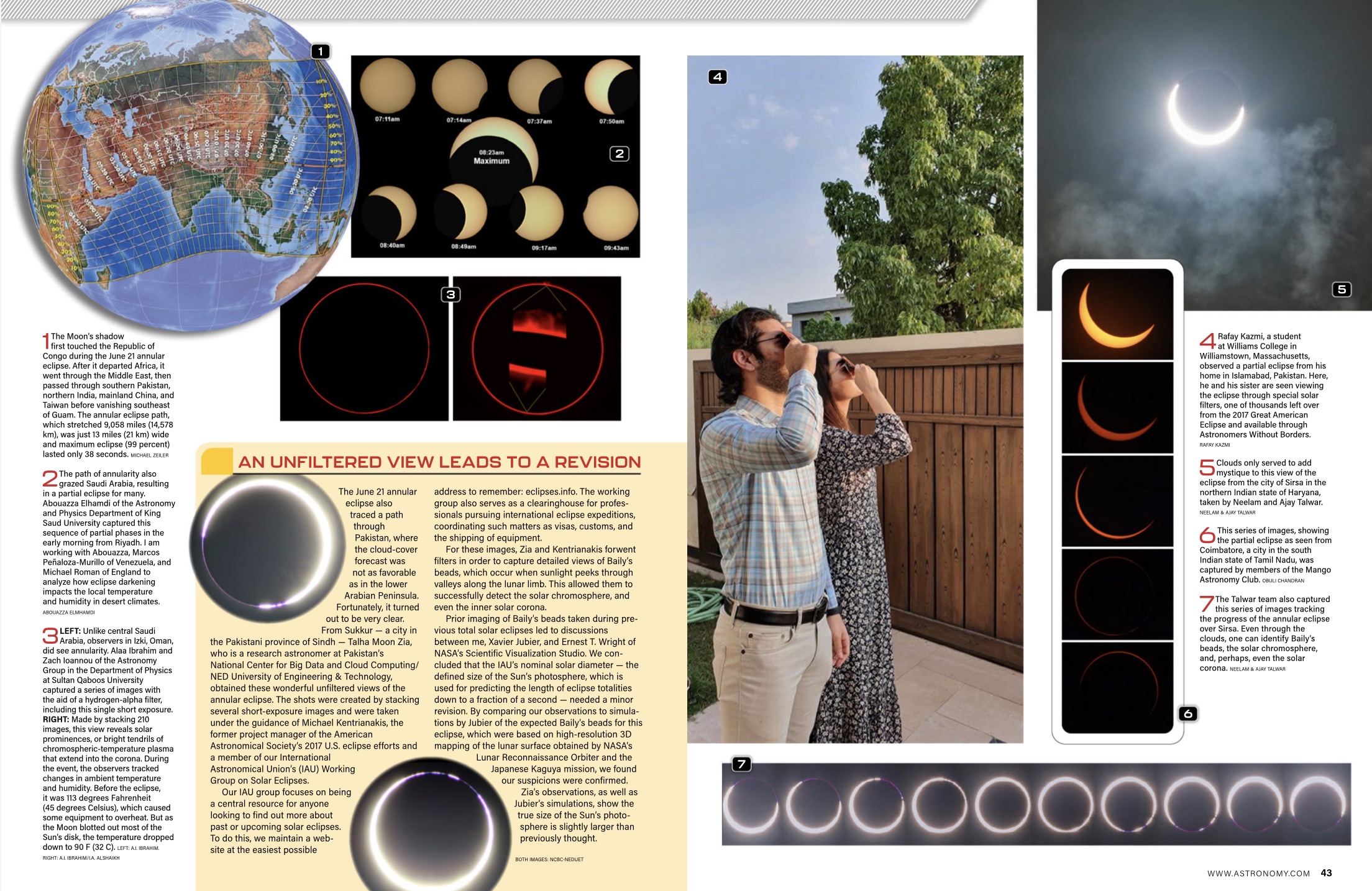|
The Atlas of Solar Eclipses — 2020 to 2045 is an adventure guide for anyone entranced by celestial wonders and interested in seeking nature’s most stupendous sight, a total eclipse of the Sun. The atlas covers every type of solar eclipse around the world — total, annular, and partial — with beautiful and informative maps at overview, regional, and detail scales.
You can view a preview of the atlas here.
The atlas spans 56 solar eclipses from 2020 to 2045. Emphasis is given to total solar eclipses in heavily populated areas, such as the 2024 April 8 eclipse across North America, the 2027 August 2 eclipse over Europe, Africa, and the Middle East, the 2035 September 2 eclipse passing over Beijing, Pyongyang, and Tokyo, the 2044 August 23 eclipse over Canada and Montana, and the 2045 August 12 eclipse crossing North and South America. Also covered in depth is the annular solar eclipse of 2023 October 14 crossing the western United States from Oregon to Texas.
The maps give you vital information for choosing optimal locations such as the duration of total or annular eclipse at each position, sky altitude of the eclipsed Sun, and contact times of eclipse. Text accompanying the maps provide a narrative for eclipse travelers including points of interest, viewing advice, photo opportunities, visible planets and stars, and eclipse circumstances. The atlas is richly illustrated and developed in an easy-to-understand style. Also included are world maps showing every total and annular solar eclipse from 1901 to 2100.
|









